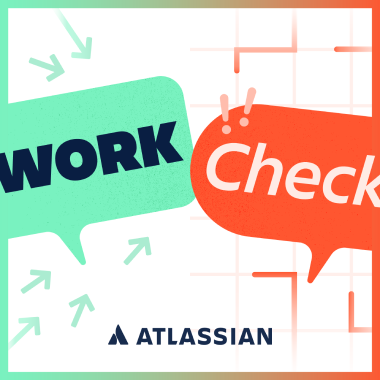Performing productivity: task-masking could be a sign you’re measuring the wrong thing
The phenomenon is a product of a task-based workplace culture, rather than one that emphasizes collaboration and innovation.
“Task masking” is a new buzzword for an old problem: employees performing busyness without necessarily being productive. Think: typing loudly, scheduling and attending needless meetings, or spending way too long scrolling through email. More often than not, it’s a product of a task-based workplace culture instead of one that emphasizes collaboration and innovation.
In other words, task masking is a symptom of a larger organizational problem that prioritizes individual outputs over collective outcomes. This is good news, because it means it’s within the organization’s power to fix it – and to lead the shift from a task-based culture to one that’s driven by ideas in service of shared goals.
The visibility trap behind task-based workplaces
In many ways, a task-based work culture comes down to an organizational obsession with visibility. That’s when organizations either implicitly or explicitly conflate being able to see employees working with a job well done. An emphasis on worker visibility also reinforces the presumption that employees work better under direct, in-person supervision.
It’s no coincidence that task masking appears to be a particularly hot topic now that many companies are cracking down on remote work and prioritizing office presence. In a 2024 Workhuman survey, nearly 70% of managers said that “faking activity” had become common on their teams, while 36% of employees admitted to doing it.
Why visibility doesn’t predict effectiveness
The visibility-first organizational mindset – and the task-based work culture that emerges from it – is a stubborn holdover from a time before modern technology made distributed teamwork possible. It’s easy to forget how, until relatively recently, knowledge workers had to show up to a physical office with in-person colleagues in order to do their jobs, at all.
But evidence suggests that the focus on visible worker outputs doesn’t necessarily translate into engaged and innovative teams. Here at Atlassian, for example, worker effectiveness has been on the upswing since we became a fully distributed company in 2020. In fact, 92% of team members say our distributed work policy lets them do their best work. Atlassians also credit the policy for a 32% improvement in focus.
A recipe for burnout
Of course, there are pros and cons to every workplace setup. But regardless of whether teams work together in an office or as part of a globally distributed workforce, a focus on visible or measurable productivity can take a serious toll on worker engagement and morale.
As Culture Partners Chief Strategy Officer Jessica Kriegel put it in a recent LinkedIn post, trying to be visible all the time is exhausting. It even discourages deep work, or “the kind of work that takes hours of focus and concentration, which often isn’t visible to anyone until the final product.”
Which brings us back to task masking. “When employees feel like they have to constantly show what they’re doing to prove their worth, they’re spending time on performative actions rather than actual productivity,” Kriegel writes. “It’s a surefire way to create burnout.”
From individual productivity to collaborative innovation
For organizations to shift from being task-based to ideas-based, leaders must first accept that they need a new approach to strategy that will better adapt to fast-moving, uncertain environments. That means stepping back from the instant-gratification loop of measuring individual workers’ apparent outputs and, instead, focusing on how to facilitate their teams’ effectiveness over time.
An agile approach to strategic overhaul
Stephanie Ockman, the Founder and CEO of Agile Socks LLC, proposes the following four key pillars as a guide for shifting toward a less task-based, and more ideas-based organization:
- Test different approaches. An iterative and flexible mindset is crucial. Trying things out, learning from the results, and adjusting course along the way allows for better-defined goals and clearer paths toward achieving them.
- Goals are more useful when they focus on outcomes instead of outputs. Focusing on outcomes helps ensure that an organization’s efforts lead to real impact.
- Metrics are information for navigation. Measures of team performance and effectiveness aren’t about declaring success or failure. Instead, they’re learning tools that offer feedback on current progress and direction. They’re like a GPS for finding the way toward achieving company goals.
- Consider a range of perspectives for measuring value. It’s important to keep in mind both the organization’s ability to deliver value today and its ability to keep delivering value into the future.
“Instead of a plan-driven, predictive way of working and leading, leaders need to use an empirical, value-driven way of working and leading,” Ockman says.
A more innovative, engaged, and ideas-driven workforce only happens when leaders let go of the false promise of “busy” workers and think in terms of working together toward common goals.










































